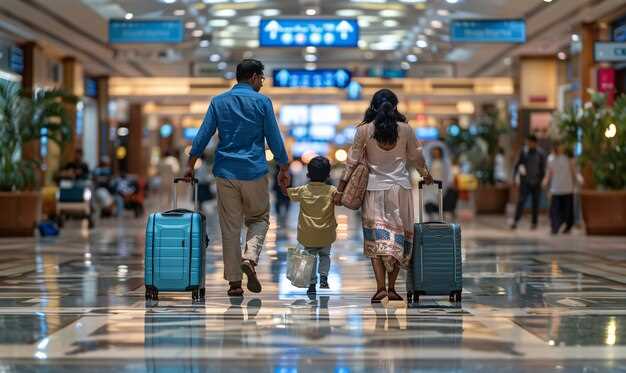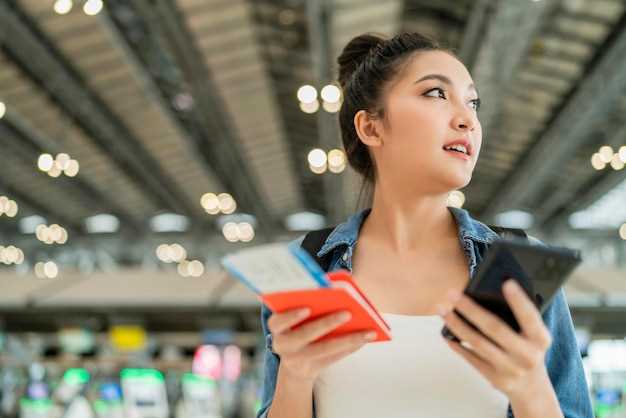Recommendation: Using the city subway, reach the edge of downtown first; then follow well-lit signs to the new air hub complex.
There are clearly labeled zones for domestic, international journeys; halal dining options appear near major gates; airlines alliances are visible on boards; local shops offer souvenirs; a passport must be shown at security; a pass grants lounge access; boards highlight gate clusters, lounge clusters, and service desks, respectively.
Whether arriving by train or car, which route minimizes transfer time? The recommended path is a direct metro link from the city center to the edge hub; guests reach downtown quickly; then switch to the feeder line for the final approach.
Though mammoth in size, the layout is intuitive: each zone hosts local services; airline lounges; check desks; clear wayfinding to gates; china origin passengers benefit from dedicated lanes, fast passport checks; clear signage.
For a memorable journey, prepare a light carry; keep the passport accessible; plan your vacation schedule around the morning peak; this reduces stress, yielding a dream pace.
For visitors from angeles or gothenburg, routes share corridors; dear visitors may check a passport; keep a pass for lounge access; there is a walking route labeled by edge, downtown markers; a friendly staff member named elizabeth can assist via the help desk near fort.
PKX Practical Travel Guide: Terminal Layout, Flight Connections, and Local Transit
West-wing layout prioritizes quick flow: shared lounges; a small museum; a cozy waiting zone; marking guides guests toward immigration corridors; onward routes split toward the eastern; western wings, respectively. langfang access sits nearby; a dedicated transfer desk; packages for short trips; postcard stands; shower facilities clearly marked near the service area. District signage assists travellers arrived from distant hubs; downtown sights are reachable via the regional line; there is also a staff person to assist guests during peak times; whenever you have free time, the west block offers a dream moment of rest.
Air-link connections follow clear lines; transit zones provide multilingual real-time information; immigration desks operate with efficiency; stamping desks marked clearly. Transfers between sections take a few minutes by moving walkways; signage identifies gate clusters; the distant concourse offers a duty-free shop; exhibits for visiting foreign guests. There is something for every traveler. If you arrive from distant regions such as cebu; bangkok, you can pick up a postcard; buy a local package; continue to the lounge area. The schedule posts news updates about arrivals from wellington; other destinations; respect posted times; minimize waiting in crowded spots; check the board before moving toward the next line.
Local transit offers langfang line connections to downtown districts; a sturdy bus network serves nearby neighbourhoods; daxing station provides a quick transfer to the west wing; luggage desks beside the ticket kiosk; a cozy waiting nook on the upper level keeps guests comfortable during transfers. For visitors aiming at the city centre, the line reaches downtown within minutes; long waits are rare due to frequent services; the route passes a volcanic motif in the main hall; a mammoth mural creates a memorable backdrop. A district map with marking guides each path; nearby shops supply postcards, snacks, and souvenirs. theres a cozy cafe near the gate. Whenever you plan a visit, a postcard from the display suits foreign guests; a calm corner by immigration desks eases a brief pause.
Locating Check-in Counters by Airline and Terminal
Consult the main guidance boards to locate your airline code; identify the matching section label; follow color arrows to the counter cluster; lanes arranged in islands help quick access; the hall is divided into sections; within minutes the desk appears.
Domestic carriers cluster in eastern sections; western approaches handle regional services; news screens refresh frequently; for those who stayed near the eastern wing, the faqs desk remains the quickest aid.
For traveler arriving from a distant province or from the southwest corridor, the quickest route runs via the central corridor to the corresponding base; signs present the base designation for each carrier; a minneapolis traveler can use the same route to reach the correct counter without extra walking.
Facilities include currency exchange desks; quick snack kiosks with desserts; outside, taxis line up for onward hops; a short walk reveals a museum and scenic terraces near the hub concourses; near huanghuacheng area, signage guides you to the origin points.
A traveler seeking extra help can use the base map on travelmandotcom or chinatravelguide8; to arrive prepared, bring local currency; check faqs; plan a route within the halls; forth changes are posted as needed; the idea is to reach your gate swiftly, with confidence that they know the exact block you need to complete your journey; they provide updates.
Security, Passport Control, and Gate Navigation Tips
Arrive three hours before scheduled boarding; keep passport, boarding pass; necessary details ready.
Place fragile packages in a carry bag with clear labels; check display details about prohibited items; pack liquids inside transparent bag; avoid overweight items at screening.
Domestic travelers should carry government ID; foreign travelers present passport with visa or residence permit; expect separate queues.
Follow posted sign directions to reach security control in the southern corridor; remove metal items; place laptops, tablets, liquids in bins; keep soft bags separate.
Luggage checks rely on details from latest scanner system; if items require unpacking, proceed with staff guidance.
Passport control operates by nationality; stamps appear on the stamp page; use customs form where applicable.
Be prepared for a separate line for foreign travelers; domestic travelers may enjoy quicker processing.
Queue times can become degraded during peak seasons; plan for longer waits; lounge options help pass time.
Gate boards show planes with origin, status, scheduled time; heed last boarding messages.
After clearance, consult floor maps on screens; follow arrows toward designated terminal gates; notices update frequently.
For lounges, seating options; food choices; convenient signs help locate the lounge near boarding areas.
Seasonal changes may shift gate assignments; check latest update before proceeding; unified signage highlights different routes.
Gates serving Chengdu appear in the southern zone; signs show names in Latin script; look for chengdu label on schedules.
This hub projects a united world where speed matters; highlights include clean restrooms, streamlined security lines; a controlled terminal flow; claim assistance desks handle lost items such as stamp proofs or packages.
Short-distance scoots operate between floors; use these to speed to distant gates.
Getting to PKX: Metro, Taxi, Rideshare, and Park-and-Ride Options

Best fast option: metro. Frequent service; direct connection to the southern complex; disembarking at the stop closest to the arrivals hall; from there, moving walkways lead to the main concourses; travel time 20–40 minutes from central districts; headways 5–8 minutes during peak, 10–15 minutes off peak; tickets from machines or mobile app; signs point to the terminal level.
Taxi: curbside pickup available, meter starts on departure; typical fare 120–180 CNY, tolls extra; ride duration 30–60 minutes depending on traffic; tip not required but appreciated; best to confirm drop-off point before leaving.
Rideshare: open Didi or similar, request ride; order accepted, driver arrives curbside; typical wait 5–15 minutes; price varies by time; receiving details in-app; seat preference can be set in the app; prefer non-surge times.
Park‑and‑ride: park in the lots near the southwest perimeter; shuttle bus to terminal area runs every 15–20 minutes; longer stays incur a daily rate; convenient for multi-city trips with luggage.
Practical tips: spring peak season means busier halls; theres frequent connections to xian, harbin, bangkok, haneda, malaysia, puerto options; travelers disembarking should head toward signs; fingerprints required at security; bring soft juice to stay hydrated; beware long queues; check timetable the day prior; theres a bridge near the pickup curb; travelers arriving from distant hubs should map routes before arrival; mutianyu day trips fit into a long layover; rock-solid schedules help finish the itinerary; travelinginchina travelers arriving in spring vacation can plan a combined itinerary with mutianyu or other nearby sights.
Baggage: Luggage Storage, Lost and Found, and Handling Tips

Store bags at Level 2 lockers near the security line for a quick stopover; beijingairport will feel lighter, traveler mood will improve; fruits stalls, tropical views, a bridge scene become accessible without dragging luggage.
Luggage storage specifics
- Location: Level 2 locker hall adjacent to security line; accepts cards, coins, mobile pay.
- Sizes: small roughly 40x60x50 cm; large roughly 80x60x100 cm; choose based on suitcase, duffel, or package.
- Rates: typically 40 yuan per day for small; 60 yuan per day for large; maximum stay 72 hours; extra per day applies beyond limit.
- Hours: open 05:30–23:00; last drop-off 30 minutes before closing; retrieval during staffed hours.
Lost items inquiry
- Location: inquiry desk positioned near security line, with a backup station near baggage claim corridor.
- Process: report loss via item description; provide tag or approximate luggage ID; staff search logs for matches.
- What to report: package contents, electronics, clothing, documents; photos help if available; mention any distinguishing marks.
- Retrieval: if located, present photo ID; proof of ownership; claim code required; pick up at the counter near security line during hours; last name may be requested.
Handling tips
- Label baggage: Names; a contact; destination; attach exterior tag plus inner tag; photograph tag for later reference; provide a backup note at home.
- Carry essentials in hand luggage: documents, medicines, snacks; keep fruits, juice cartons in permitted containers; ensure liquids comply with security policies.
- Security rules: remove restricted items; place electronics and liquids in designated bins; ensure lockers hold only permitted items; avoid bulky items that obscure labels.
- Family travelers: for children, designate a quick-access bag; pack snacks such as fruits; juice boxes in carry-on; label child’s bag with contact info.
- Route planning: if a stopover includes houston, harbin, busan, cebu, novgorod, francisco; clearly mark destinations on tags; coordinate with driver if a third party will retrieve bags; enter the claim code when needed; leave receipts with travel documents for reference.
Dining, Shops, Lounges, and Comfort Facilities by Terminal
Best approach: head to Terminal 2 first; a broad dining mix, retail clusters, and quiet lounges near the central atrium; transfers are straightforward and signage is clear for easy navigation and quick orientation. Information desks are positioned at key crossroads, with bilingual assistance and maps to help your itinerary.
Dining options span quick bites, regional favourites, and café concepts. Expect pork noodle bowls, dumplings, noodle soups, and Western staples; beverages include tea, coffee, fresh juice, and specialty options.
Shops cover fashion, travel essentials, gifts, and electronics. Brand clusters line the main spine; local craft items appear near Sanyuanqiao and Tiananmen-themed displays to offer a sense of place; nearby products reflect province vibes with urban flair.
Lounges comprise carrier spaces and independent lounges; most sit near the central transfer zone, with clusters around gate groups. Access relies on ticket tier, loyalty membership, or day-pass; some spaces provide showers, quiet rooms, reliable wifi, and ample charging outlets. For lounge specifics, consult singaporeaircom and the official portal.
Comfort facilities include clean restrooms on every level; baby care rooms; nursing rooms; prayer spaces; quiet zones; showers; charging stations; free wifi; currency exchange; ATMs; nearby shops for last-minute essentials.
Practical tips: maps and live status are available at information counters; use east and west wing indicators to plan transfers; set aside time of 60–120 minutes to explore major clusters during a layover; a well-planned itinerary helps reduce stress for a smooth stay.
Source: ACI World





















